
Conducting a DIY Termite Inspection: Tips for Homeowners
August 2, 2023
Reducing Humidity At Home to Prevent Termite
August 30, 2023Termite Feeding Habits: What Do They Eat and Why?

Termite Feeding Habits What Do They Eat and Why
Termite Feeding Habits: What Do They Eat and Why? Termites, often called “silent destroyers,” are social insects that play a crucial role in ecosystems, primarily through their feeding habits.
Understanding what termites eat and why is essential for homeowners, researchers, and pest control experts.
This comprehensive article will explore the intriguing world of termite feeding behavior and the various factors influencing their dietary preferences.
Read on – Termite Feeding Habits: What Do They Eat and Why?
Understanding Termite Feeding Behavior
Termites have evolved complex feeding mechanisms and have developed a unique ability to digest cellulose, a tough and abundant compound in plant cell walls.
This ability allows termites to extract nutrients from cellulose-rich materials, making them highly efficient decomposers.
Understanding termite feeding behavior is crucial for devising effective pest management strategies to protect homes, crops, and other wooden structures from termite infestations.
The Diet of Termites
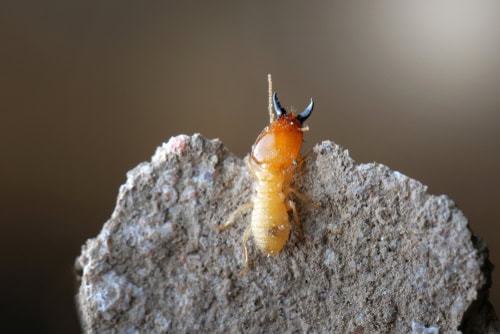
Termites are primarily known for their wood consumption, but their diets are more diverse than expected.
Cellulose: The Primary Food Source
Cellulose is the main component of plant cell walls and is the primary food source for termites.
While many creatures struggle to digest cellulose, termites have a remarkable adaptation – a symbiotic relationship with gut microorganisms.
These microbes help break down cellulose into simpler compounds that termites can absorb and utilize for energy.
Types of Wood Preferred by Termites
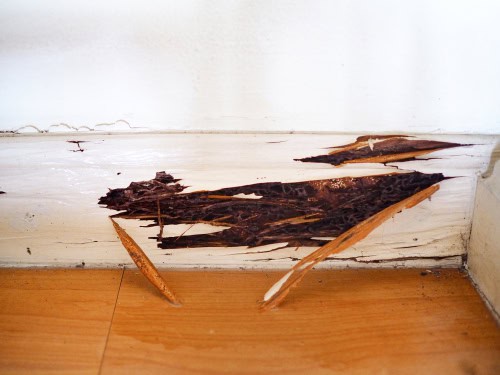
Not all woods are created equal in the eyes of termites. Their dietary preferences vary based on the type and condition of the wood.
Softwoods vs. Hardwoods: Termites’ Preferences
Termites exhibit differing preferences for softwoods and hardwoods. Softwoods, like pine and spruce, are generally more susceptible to termite damage due to their higher cellulose content and easier digestibility. On the other hand, hardwoods, such as oak and mahogany, contain more complex compounds, making them less favorable for termite feeding.
Decayed Wood and Termite Foraging
Termites are also attracted to decaying wood, as it is softer and contains a higher cellulose concentration due to partial decomposition. Decayed wood provides termites with an abundant and easily accessible food source.
Non-Wood Food Sources
While termites are primarily associated with wood consumption, they can also feed on other materials.
Consumption of Soil and Humus
Some termite species, particularly subterranean termites, consume soil and humus. They extract nutrients and minerals from the soil, which may supplement their diet during certain life cycle stages.
Plant Matter and Fungi in the Diet
Termites can also feed on plant matter, such as fallen leaves and grass. Additionally, certain termite species have been observed consuming fungi, which further diversifies their diet.
Factors Influencing Termite Feeding Behavior
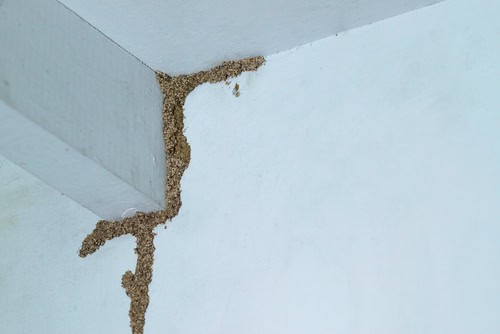
Environmental Factors
Environmental conditions, such as temperature, humidity, and soil moisture, can impact termite foraging activities. Termites are more active and aggressive in environments conducive to their survival.
Nest Location and Diet Selection
The proximity of food sources to termite nests can influence their dietary choices. Termites may preferentially feed on food sources located closer to their colonies.
How Gut Microbes Aid in Food Digestion
Gut microorganisms produce enzymes that termites lack, enabling them to break down cellulose into simpler compounds. The termite host then absorbs these compounds to meet its nutritional needs.
The Role of Social Behavior in Feeding
Termites’ social organization and division of labor significantly influence their feeding habits.
Termite colonies are highly organized, with different castes performing specific roles, including foraging for food. Workers are primarily responsible for locating and gathering food, while other castes support the colony’s functions.
Termites engage in collective decision-making when selecting food sources. They communicate through pheromones and other chemical signals to guide the colony to the most suitable food sources.
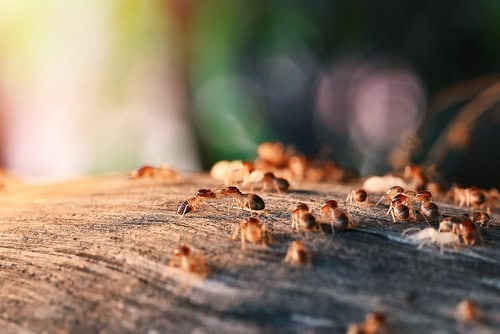
Termite Feeding Adaptations
Termites have evolved various adaptations that facilitate their feeding behavior.
Termites possess specialized mouthparts that allow them to chew through wood and other materials. These mouthparts vary among termite castes and are adapted to their specific tasks.
As eusocial insects, termites rely on cooperation and communication within their colonies. This social structure enhances their ability to locate and exploit food resources effectively.
Impact of Termite Feeding on Ecosystems
Termites play a crucial role in ecosystem dynamics due to their feeding habits.
Termites contribute significantly to nutrient cycling by breaking down organic materials, such as fallen wood and leaves, and returning the nutrients to the soil.
While termites benefit nutrient recycling, they can also impact vegetation dynamics and soil structure. Their feeding activities can influence plant growth and community composition in certain ecosystems.
Termite Feeding Habits and Human Interaction
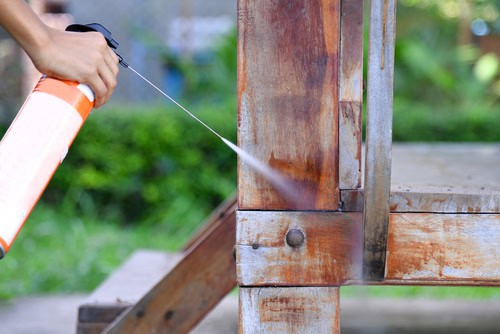
The interaction between termites and humans has both positive and negative implications.
Termites as Pests: Damage to Structures
When termites come into contact with human-made structures, they can cause significant damage. Their feeding on wooden components of buildings and infrastructure can lead to costly repairs.
Termites in Agriculture: Impact on Crops
Termites can also affect crops by feeding on plant matter, including roots. This can potentially reduce crop yields and impact food security in certain regions.
Effective Termite Management and Prevention
Controlling termite infestations requires a thorough understanding of their feeding behavior.
Identifying Feeding Sites and Infestations
Identifying the location of termite feeding sites is crucial for targeted pest control strategies. Monitoring termite activity can help detect infestations early.
Integrated Pest Management Strategies
Integrated pest management (IPM) approaches, which combine various termite control methods, can effectively manage infestations while minimizing environmental impact.
Sustainable Approaches to Termite Control
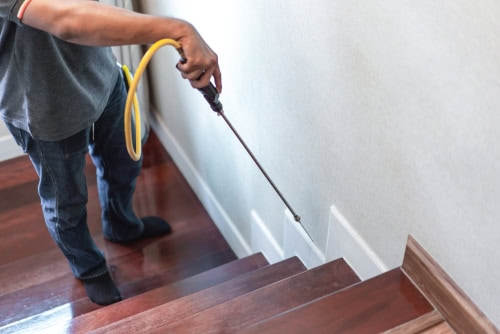
Considering termites’ ecological significance, sustainable control approaches are gaining importance.
Environmentally Friendly Treatment Options
Some pest control methods prioritize using environmentally friendly alternatives to traditional chemical treatments.
Balancing Termite Control and Ecosystem Health
Efforts are being made to strike a balance between termite control measures and preserving the ecological role of termites in natural ecosystems.
FAQs about Termite Feeding Habits
Here are some common questions and answers related to termite feeding behavior:
Do all termites eat wood?
While most termite species consume wood, some termites feed on soil, humus, plant matter, and fungi.
How can termites digest cellulose?
Termites rely on a symbiotic relationship with gut microorganisms, producing enzymes that break down cellulose.
Can termites eat through concrete?
Termites cannot chew through concrete but can exploit cracks and gaps in concrete to access wood or other cellulose-rich materials.
Do termites eat paper and cardboard?
Yes, some termite species can consume paper and cardboard, as these materials contain cellulose.
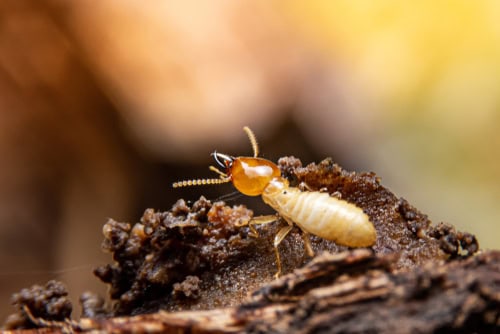
Termite Feeding Habits: What Do They Eat and Why? – Conclusion
The feeding habits of termites are remarkable and diverse, shaped by various factors such as their symbiotic relationship with gut microorganisms, environmental conditions, and social behavior.
Understanding termite diets and the impact of their feeding on ecosystems and human activities is essential for effective pest management and ecological conservation.
By developing sustainable approaches to termite control, we can balance protecting our homes and structures and preserving termites’ vital role in nature’s intricate web.
Stay informed and take proactive steps to safeguard your property from termite infestations!
Are you looking for a professional and reliable termite control service in Singapore? Contact us today!




